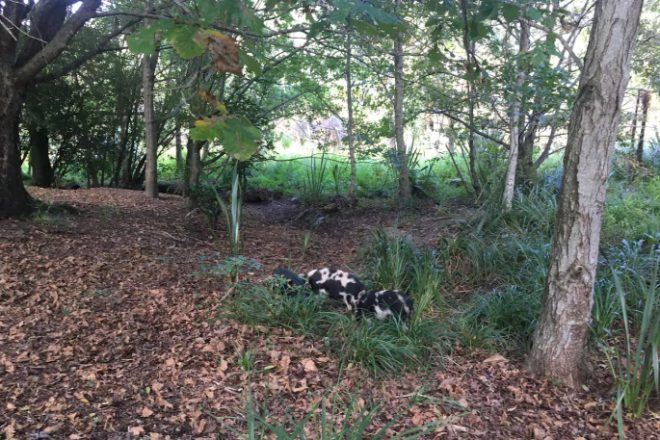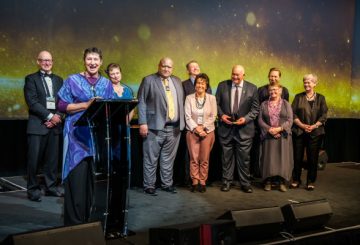A family of pigs that had been causing a stir in Tauranga for two weeks has finally been caught and rehomed. The mother pig and her eight piglets had been seen wandering around the suburb of Welcome Bay, even entering people’s backyards and disrupting picnics in Johnson Reserve.
The local council received nine official complaints and numerous social media posts about the pig sightings. One post described a “porker invasion” at a property in Welcome Bay, while another recounted a mother’s frightening encounter with the pig family during a picnic in the reserve. The mother said the pigs tried to eat their snacks and tossed their bags around in search of food.
Pam Thorpe, a spokeswoman for the Johnson Reserve Care Group, said members saw four or five pigs in the reserve on Sunday. They were eating acorns under oak trees near the Victory St entrance. She expressed concern about the potential damage the pigs could cause to the native plants in the reserve.
Brent Lincoln, the leader of Tauranga City Council’s animal services team, said the council had received nine complaints about the pigs over a span of 10 days. According to the council’s Keeping of Animals Bylaw 2018, pigs are not allowed in the city unless the land is zoned rural, and pigs in rural areas must be kept behind a stock-proof fence.
Lincoln said the pigs had now been removed from the reserve and rehomed. He advised people to move away if they encounter pigs and to leave a small amount of food to distract them. He also warned against trying to pet them or separate the piglets from the mother pig, as this could aggravate the situation. He added that owners can be held responsible for any damage caused by their roaming animals and could face a fine of up to $20,000 and loss of their animals if they fail to control them.
Johnson Reserve is a sprawling, dog-friendly park covering about 14.5 hectares. It features large open spaces, bush tracks, a small waterfall, and wetlands, and can be accessed from Victory St, Pelorus St, or Waipuna Park.
























































-helped-regain-her-strength-and-balance-using-Nymbl-after-a-fall.-660x440.jpg)


